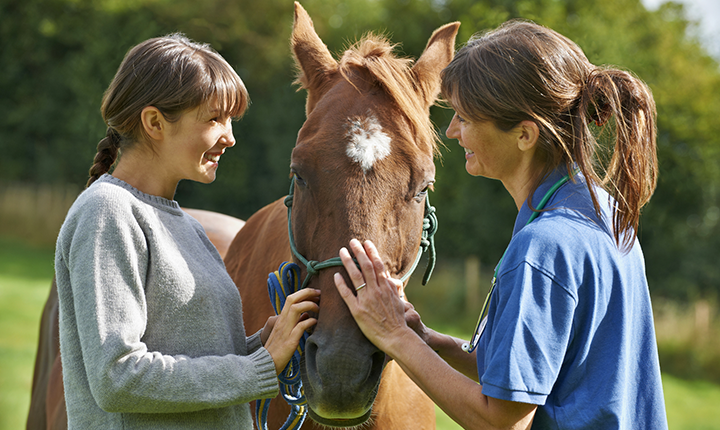2200004 - Equine Health & Disease Prevention
Course Description

Be an effective advocate for your horse. Explore many of the common problems faced by horses—many due to management problems—and learn how to develop a year-round health maintenance program that will ensure their optimal health.
Examine new research that includes practical applications for the horse owner and the appropriate steps to take so you can reduce the risk for your horses and enhance your role in helping your veterinarian as part of their health care team.
Learning Outcomes
Upon successful completion of this course, you will be able to:
- Identify the value of effective communication as it pertains to your horse’s health
- Identify individual needs of your horse regarding health management and disease prevention
- Identify common health problems and strategies available to prevent and/or manage them
- Perform a daily health check and relay important data to your veterinarian that will aid in the health and welfare of your horse
- Analyze biosecurity risks and determine the factors needed for infectious disease prevention strategies
- Differentiate when immediate medical aid may be required or not, and identify first aid measures in different emergency scenarios
- Ask your veterinarian educated questions, and discuss problems relating to your horse's health in an informed manner so that you may assist in the formulation or revision of your preventative health program
- Find, interpret and critically appraise new information in order to update your background knowledge on a topic of interest
Course Topics
- Advocate for Your Horse's Health
- Monitoring Your Horse's Health
- Role of Biosecurity in Equine Wellness
- Effective Approaches to Emergencies
- Hoof Health and Conditions
- Lameness: Diagnostic Process and Understanding Conditions
- Dental Care
- Parasite Control
- Owner Impact on Colic
- Overview of Medical Conditions
- Respiratory and Cardiovascular Health
- The Pre-Purchase Examination
Additional Requirements
- This course is intended for adult learners who are at least 18 years of age.
- There are no prerequisites for this course.
- You may take this as an individual course or choose to complete one of our equine certificates or the diploma.*
- You do not need access to a horse to participate and be successful in this course.
- You can expect to spend 6-10 hours per week to compete the course material, discussions and assignments.
*If you are a certificate or diploma program student, we recommend that you complete Management of the Equine Environment first, or very early in your course of studies. This course is offered every semester.
Assessment
| Assessment Item | Weight |
|---|---|
| Quizzes | 40% |
| Class Learning Questions (CLQ) Discussions | 12% |
| Guest Speakers Discussion | 3% |
| Equine Virtual Farm | 10% |
| First Aid Assignment | 20% |
| Lameness Research Assignment | 15% |
| Total | 100% |
Please note that the course assessment is subject to change.
Sponsoring Partner
Applies Towards the Following Certificates
- Diploma in Equine Studies : Required Courses
- Equine Science Certificate : Required Courses
Technical Requirements
You are responsible for ensuring that your computer system meets the necessary system requirements. Use the browser check tool to ensure your browser settings are compatible and up to date (results will be displayed in a new browser window).
*Course details are subject to change.
View the upcoming course schedule at Equine Studies Upcoming Course Schedule
Sign up for our Email Updates and we'll let you know when registration opens.

